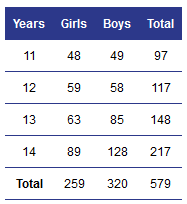Sports talent identification in zimbabwe: a comparative study
Main Article Content
Abstract
The implementation of talent selection systems in Zimbabwe is complicated by the lack of qualified personnel, the high cost of tests, equipment and because the majority of the population is rural. This article makes a preliminary analysis with the first data collected in the Sport Talent Identification Project in Zimbabwe. The objective was to compare the statistical norms used to identify sports talent in Zimbabwe and Mexico. Theoretical and empirical scientific methods were used. The physical tests applied were: height, push-ups, sit-ups, long jump without running, speed and resistance. The values used in comparison are those of the 90th and 97th percentiles because they are the ones used to identify sports talents. Percentage significance was determined using the critical values of the sign test. In the comparison, the sample of the African country achieves outstanding results in most of the indicators analyzed. With these preliminary results, it cannot be established that the population of Zimbabwe has significant physical possibilities for practicing sports. However, it can be inferred that many of the children evaluated so far could be considered potential sports talents if they lived in Mexico.
Downloads
Article Details

This work is licensed under a Creative Commons Attribution-NonCommercial 4.0 International License.
Those authors who have publications with this journal, accept the following terms of the license Attribution-NonCommercial 4.0 International (CC BY-NC 4.0):
You are free to:
Share — copy and redistribute the material in any medium or format
Adapt — remix, transform, and build upon the material
The licensor cannot revoke these freedoms as long as you follow the license terms.
Under the following terms:
Attribution — You must give appropriate credit, provide a link to the license, and indicate if changes were made. You may do so in any reasonable manner, but not in any way that suggests the licensor endorses you or your use.
NonCommercial — You may not use the material for commercial purposes.
No additional restrictions — You may not apply legal terms or technological measures that legally restrict others from doing anything the license permits.
Notices:
You do not have to comply with the license for elements of the material in the public domain or where your use is permitted by an applicable exception or limitation.
No warranties are given. The license may not give you all of the permissions necessary for your intended use. For example, other rights such as publicity, privacy, or moral rights may limit how you use the material.
References
Elumaro, A. Ayenigbara, O. Adegboro, J. Momoh, D. (2021). Exploring Talent Development Environments in Nigeria: A Case Study of Sport Development Framework in Ondo State. J Adv Sport Phys Edu, 4(10), 212-218. https://doi.org/10.36348/jaspe.2021.v04i10.001
Jacob, A. B. I. S. A. I. (2014). Assets and modes of identification and development of talented student-athletes in selected sport disciplines in Kenyan universities [Doctoral dissertation, Kenyan Universities]. Repositorio Kenyatta University. https://irlibrary.ku.ac.ke/bitstream/handle/123456789/11954/Assets%20and%20modes%20of%20identification%20and%20development%20of%20talented%20student%20athletes%20in%20selected%20sport%20disciplines%20in%20Kenyan%20Universities.pdf;sequence=2
Munene, D. M., de la Paz, L. Touset, R. (2014). Selección de posibles talentos en las pruebas de medio fondo en atletismo en Kenia. EFdeportes, 19 (193) https://www.efdeportes.com/efd193/talentos-en-medio-fondo-en-atletismo-en-kenia.htm
Pérez, I. (2017). Methodological bases for talents identification in sports. The International Journal of Humanities & Social Studies, 5(9). http://www.internationaljournalcorner.com/index.php/theijhss/article/download/125647/86643
Pila, H. (2003). Selección de talentos para el deporte, 27 años de experiencia en Cuba. Metodología de las pruebas. Revista Electrónica EFdeportes, 9 (65) https://www.efdeportes.com/efd65/talento.htm
Pila, H. (2004). Selección de talentos para el deporte, 27 años de experiencia en Cuba. Metodología para evaluar las pruebas. EFdeportes, Year 10(69) https://www.efdeportes.com/efd69/talento.htm
Zatsiorskij, V. (1989). Metrología Deportiva. Editorial Planeta.

